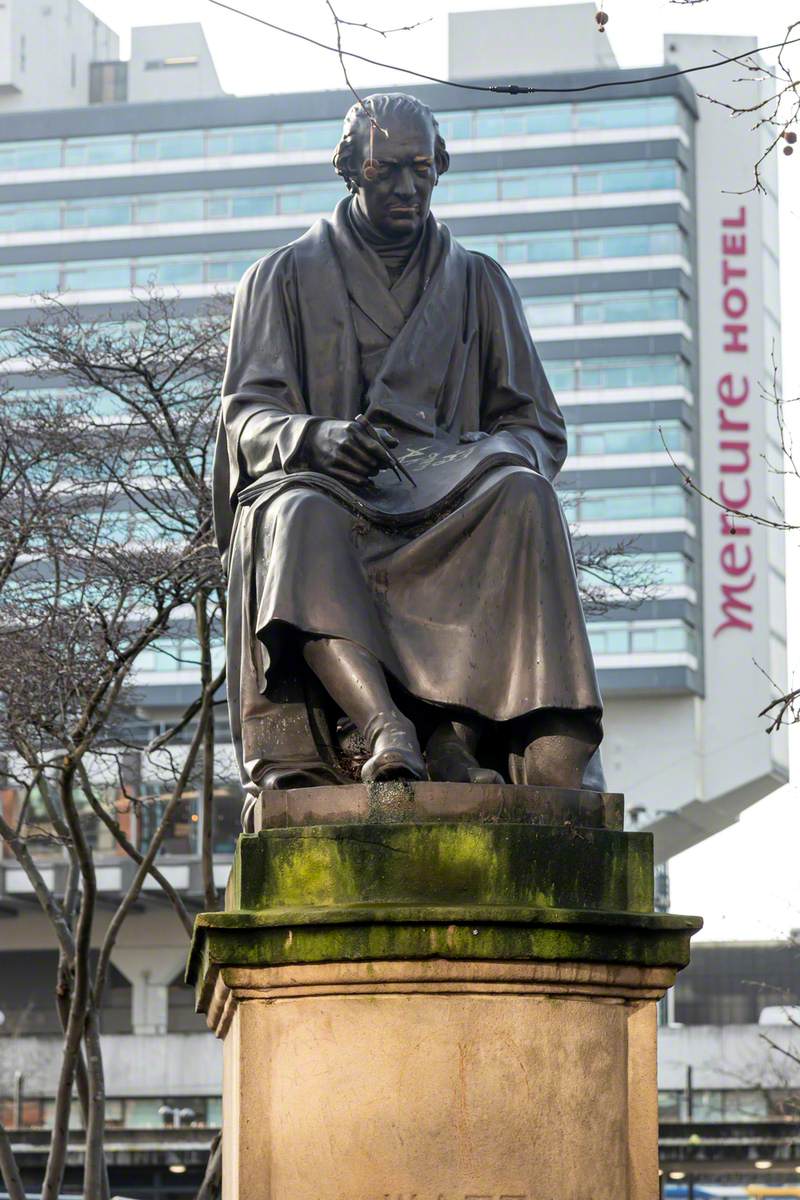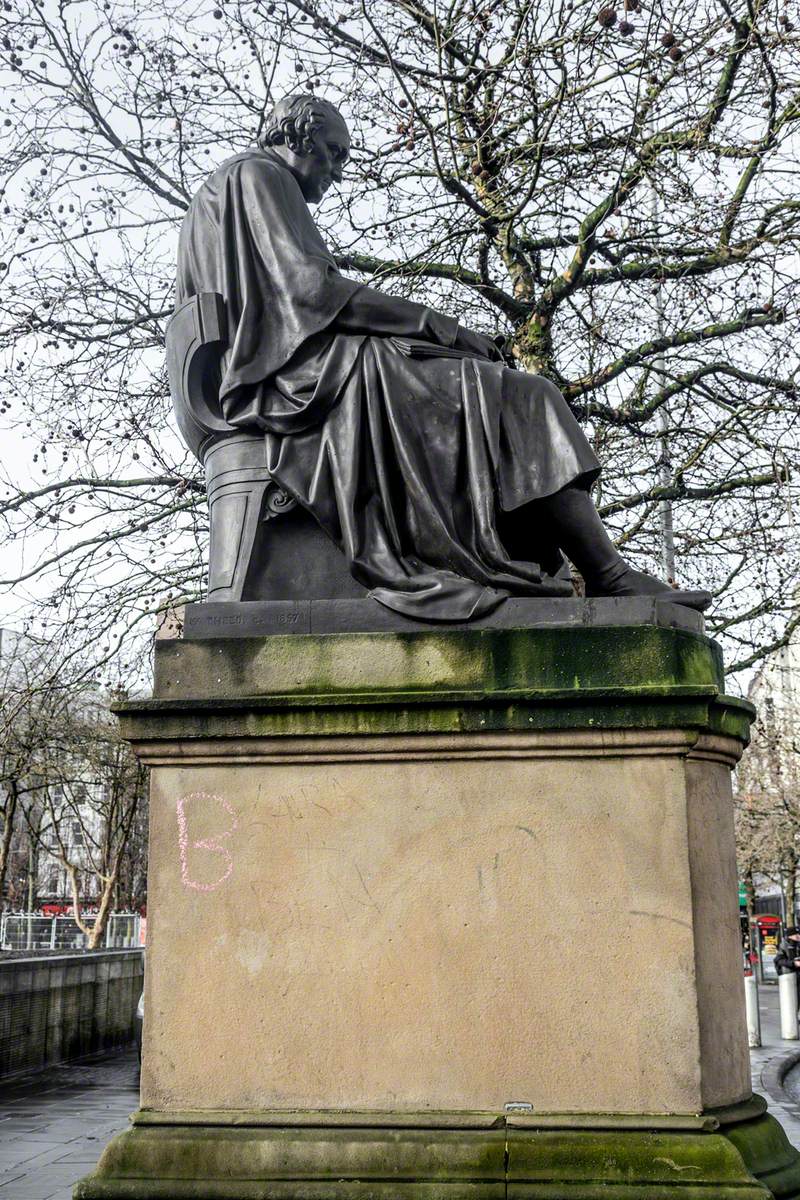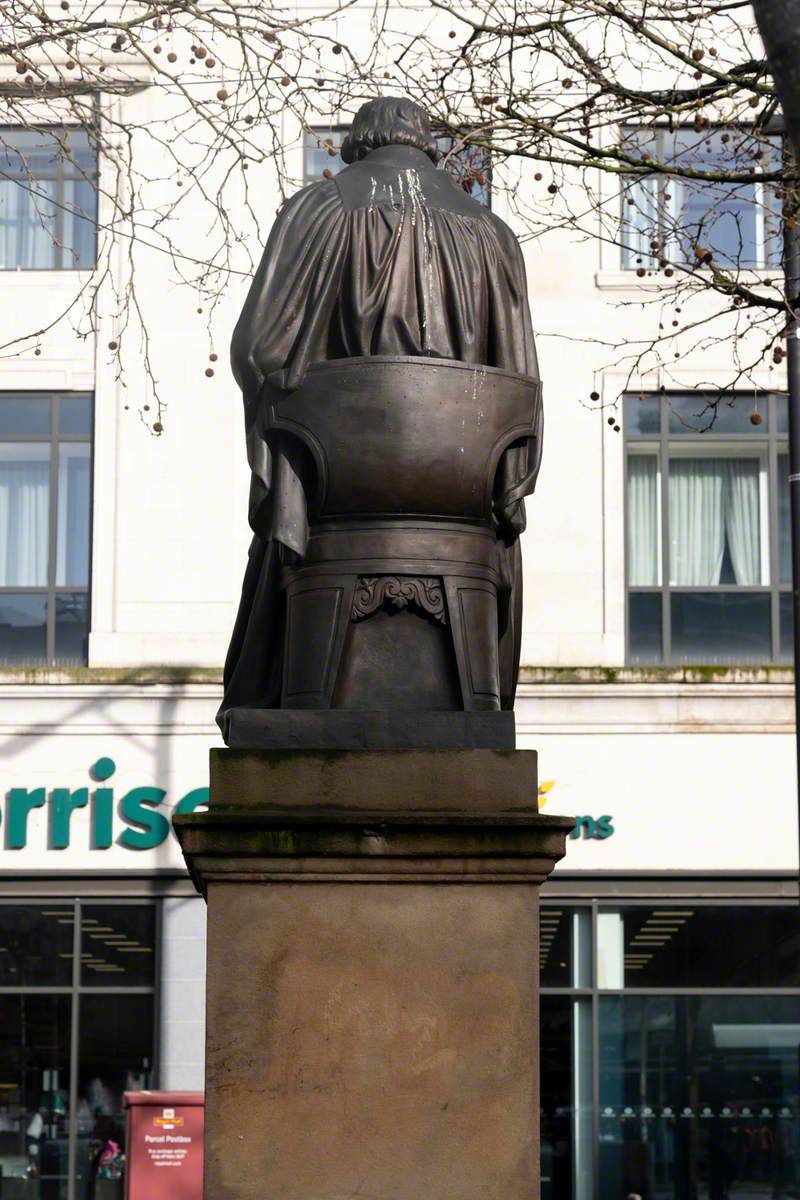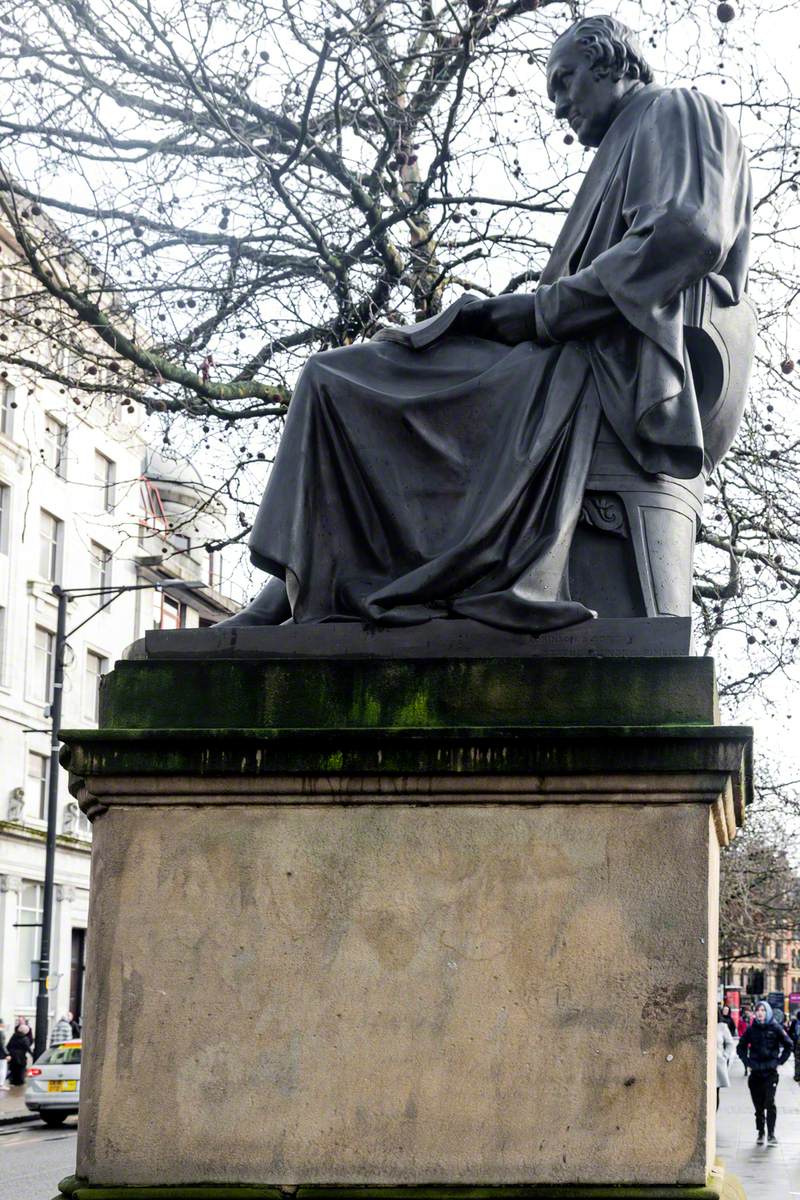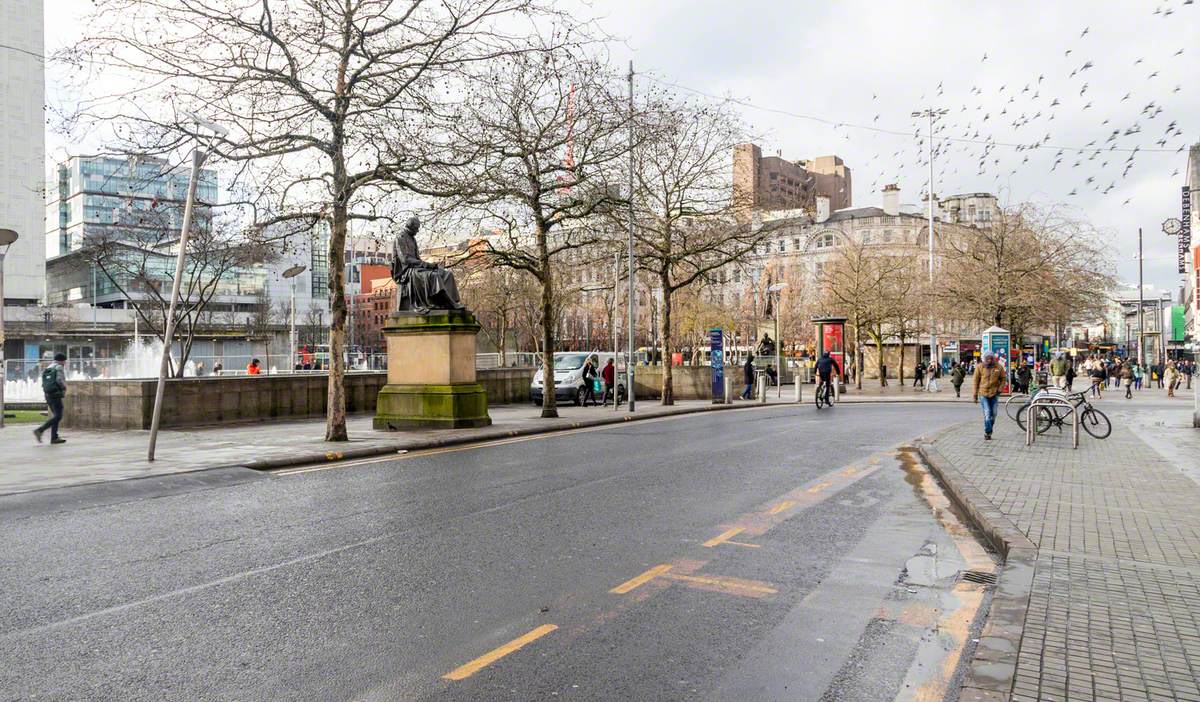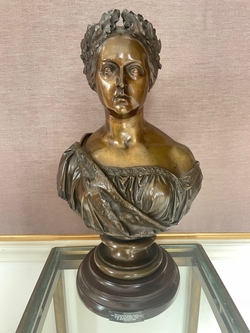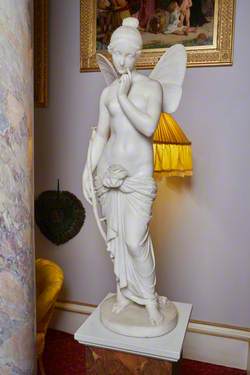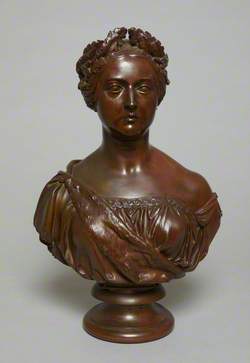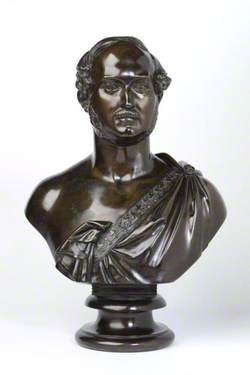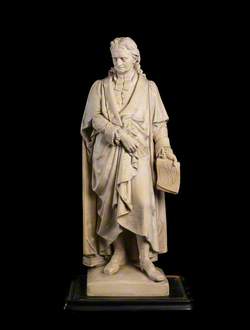How you can use this image
This image is available to be shared and re-used under the terms of the Creative Commons Attribution-NonCommercial licence (CC BY-NC).
This image can be reproduced in any way apart from any commercial uses.
Wherever you reproduce the image or an altered version of it, you must attribute the original creators (acknowledge the original artist(s), the person/organisation that took the photograph of the work) and any other stated rights holders.
Review our guidance pages which explain how you can reuse images, how to credit an image and how to find more images in the public domain or with a Creative Commons licence available.
DownloadNotes
Add or edit a note on this artwork that only you can see. You can find notes again by going to the ‘Notes’ section of your account.
Watt is shown seated holding a pair of dividers, and a scroll of paper on his lap. It surmounts a stone pedestal. James Watt was an engineer and inventor. In the 1760s he began investigating ways to improve existing steam engines. His improvements, including the separate condenser, were commercially exploited in his partnership with Matthew Boulton. Beginning in 1774 at the famous Soho works, Birmingham, Boulton and Watt began to manufacture the engines that made the use of steam power a practical reality for many industries. Other improvements to the steam engine were made in the following years. Watt was a versatile engineer and inventor whose interest was not confined to steam engines. The design of an effective sculpture-copying machine was one of the mechanical problems that occupied him for many years.
Title
James Watt (1736–1819)
Date
1857 or before
Medium
bronze
Measurements
H 210 x W (?) x D (?) cm;
Plinth: H 200 x W 133 x D (?) cm
Accession number
M1_MH_S101
Acquisition method
commissioned by the Watt Memorial Committee
Work type
Statue
Custodian
Manchester City Council
Work status
extant
Listing status
Grade II (England and Wales)
Unveiling date
26th June 1857
Access
at all times
Inscription description
WATT
